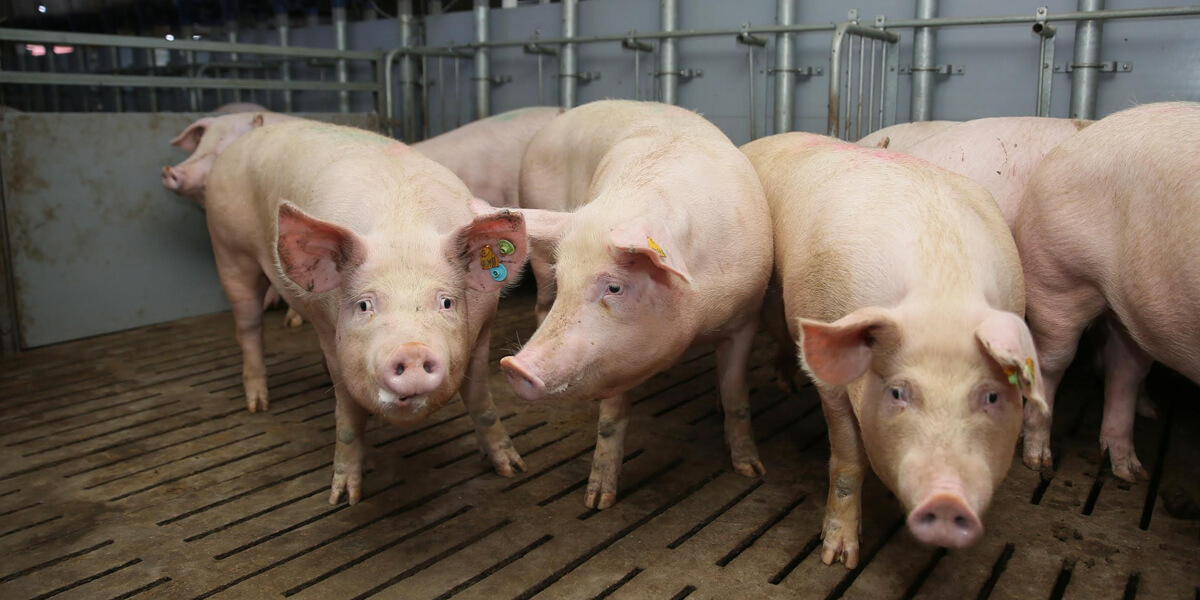Antibiotics have been used for two distinct purposes in the swine industry: growth promotion, and disease treatment and prevention. There are also two primary reasons that the swine industry has begun reducing its use of antibiotics in pigs: to comply with the Veterinary Feed Directive (VFD), and to meet consumer demands for pork raised without antibiotics.
In the past, swine antibiotics were fed at sub-therapeutic levels in order to knock down global pathogen loads on animals. Along with the benefits of less morbidity and mortality, an unintended benefit of this was improved growth.
Learn more: Antibiotic-free animal production best practices
The Veterinary Feed Directive (VFD), which went into effect in 2017, mandates that antibiotics that are medically important for humans can no longer be fed in animal diets at sub-therapeutic levels. The Veterinary Feed Directive is designed to help alleviate the increasing threat of antibiotic resistance in humans and animals.
Antibiotic use has also been influenced by demand for antibiotic-free pork products, as a segment of consumers are willing to pay a higher premium for antibiotic-free meat.
As swine antibiotic use continues to decrease, producers have seen noticeable reductions in growth performance and an increase in disease challenges and other health events. Producers have even seen a resurgence in some endemic bacterial challenges that had previously been under control. For example, Lawsonia intracellularis is typically defined as an early- to mid-grower pig disease, but with the reduced use or elimination of specific antibiotics available to the swine industry, producers are starting to see this disease make its way back into the nursery.
Swine Antibiotics Are Still Used in Animal Production
Although swine producers are taking a more disciplined approach to their use of antibiotics in pigs since the implementation of the Veterinary Feed Directive, therapeutic levels are still used today to target specific pathogens during specific phases of production. They are also used to treat pigs when they get infected with a specific disease, especially during times of stress.
In conventional production systems, for example, producers will use therapeutic levels of antibiotics in the nursery and around weaning to help prevent diseases brought about during weaning stress. Even in antibiotic-free production systems, if a producer must use antibiotics to treat a sick pig, they will move that pig to conventional production and will not be able to sell the animal as antibiotic-free meat.
Five Tips for More Disciplined Use of Antibiotics in Pigs
While therapeutic levels of antibiotics should still be used when it is in the best interest of the wellbeing of your pigs, it can also be in your best interest to limit antibiotic use as much as possible. Here are five tips for more disciplined use of antibiotics in pigs:
- Properly manage animal biosecurity. Be sure you are properly washing, sterilizing and drying pig pens after a group of pigs moves out and before the next group moves in. This will help avoid exposing the new pigs to bacteria and pathogens they have not yet been exposed to. You should match the health status of pig flows out of sow farms by flowing pigs into weaning/growing units with a health status similar to their own.
- Manage feed and truck biosecurity. Make sure that feed is not a vehicle to transmit disease into your swine operation. Some disease outbreaks have been caused by emergency, such as weekend feed delivery from trucks coming from a nursery or finishing site where a particular disease was present.
- Manage stress. Make sure your facility has the proper ventilation, air exchanges and temperature to keep pigs’ internal temperatures comfortable and to limit additional stress.
- Maintain a good vaccination program. Make sure your vaccine protocol and timing are right.
- Formulate swine nutrition with performance trace minerals. A well-fortified, high-quality diet can eliminate a lot of challenges in a pig’s system. Feeding zinc from performance trace minerals, on top of zinc oxide and copper sulfate, can help pigs mount a rapid and robust immune response to challenges. This, in turn, will promote improved growth and performance in the absence of antibiotics. It is recommended that producers feed either 50 ppm of zinc from Zinpro® Availa® Zn as a partial replacement in your swine nutrition and feeding program, or zinc from Zinpro® ProPath® LQ Zn at 40 mg per liter of drinking water.
Improve Swine Health, Reduce Your Use of Antibiotics in Pigs
To learn more about when you should use antibiotics on your swine operation and how they should be applied, consult your veterinarian.
For more information about how Zinpro Performance Minerals® can improve your pigs’ immune response and improve growth and performance in an antibiotic-free production system, contact your Zinpro representative today.

